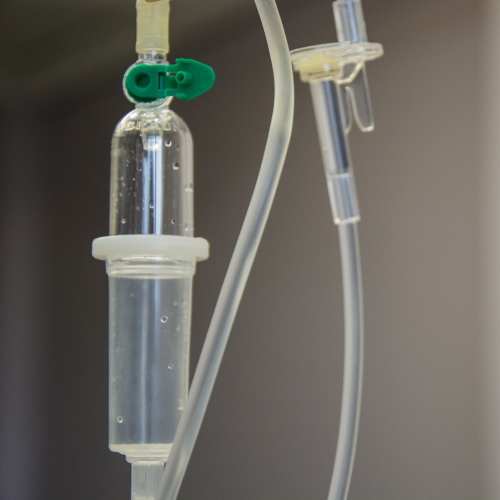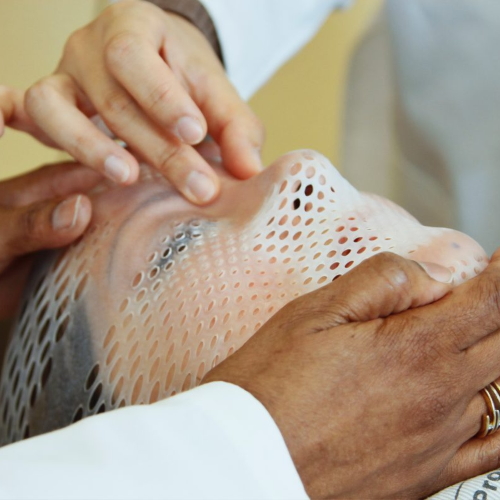Multiple Myeloma Screening
Rafael Fonseca, MD
(ASH 2021)
Published March 2022

Dr. Rafael Fonseca shares information about multiple myeloma clinical trials, new therapies, and emerging changes in the standard of care for multiple myeloma patients, following the American Society of Hematology (ASH) 2021 conference,
Dr. Fonseca has been a practicing hematologist for almost three decades, now interim executive director at Mayo Clinic. As a veteran specialist of the myeloma field, he shares his insights on the latest in emerging treatments and clinical trial studies.
The interview has been edited only for clarity.
Studies: iSTOP and PROMISE
The Patient Story: There were two big studies discussed at ASH focused on screening: iSTOP in Iceland, and the PROMISE study led by Dana Farber that started a couple of years ago, which focused on diverse populations. Can you describe the importance of those studies?
Why iSTOP Matters
This [iSTOP] is an incredibly important trial. Their goal was to do the whole screening for the country of Iceland. And what they went about to do was set up a system whereas people would be offered to be screened for the presence of monoclonal proteins. And they have a very robust partnership with the laboratory methodology to be able to test this at a high level and with great precision.
This is where phase III trials meet real world data, and really establishes some very interesting findings.
Dr. Rafael Fonseca
They went about to do a population based study, and at the end of it all, it was very, very large– 75,000 people. This is where phase III trials meet real world data, and really establishes some very interesting findings.
There were three or four key takeaways. One is that we know there’s a small fraction of the population with smoldering multiple myeloma, so they have established that through screening. It’s less than one percent that they estimated, but it’s still measurable. And that is important because as we have clinical trials where people are saying we should think about treating smoldering, we’re going to have to be more and more careful about that.
One of the randomizations was how to approach patients and then what to do afterwards. What they’re trying to see is if you have an early intervention, and you detect this early, then you can prevent some of the complications.
That’s very important because a myeloma patient who progresses to development of lytic bone lesions, especially if that results in a fracture, or renal problems, can have lifelong consequences. Then, as they live many years now after diagnosis, that’s very undesirable.
It also establishes the baseline for the prevalence of monoclonal gammopathy of undetermined significance (MGUS) in that population. So what we need to do is to think about how this extrapolates. I think there’s a susceptibility according to the various regions, but for what they tried to test, it was a remarkable study.
Why PROMISE Matters
PROMISE is a very large study led by the team of Dr. Ghobrial from Dana-Farber. And they’re able to show higher prevalence than expected for monoclonal gammopathy. In populations at risk, although the numbers will evolve, the number I keep in my head is about 10%. That’s in people who have family members who have monoclonal gammopathy or individuals of African-American ancestry, who have a higher incidence for this.
I hold the belief that many of us have slightly abnormal plasma cells somewhere in our body because we get exposed so many times through our lifetime that the opportunity for a mistake is actually quite high.
Dr. Rafael Fonseca
The other finding that was remarkable was that they found that a small fraction of patients that have abnormalities that would be a little bit more like a pre-MGUS, and some of those were reported as transient.
Now, there’s no reason to believe that humans don’t have some old clones. We know that for other tumors. So it was only logical that in time it would be found in patients who have things like MGUS. I hold the belief that many of us have slightly abnormal plasma cells somewhere in our body because we get exposed so many times through our lifetime that the opportunity for a mistake is actually quite high.
But you know, the studies are descriptive for the most part right now. But I really commend the efforts of the team of Dr. Ghobrial as well, too, in trying to establish this new baseline.
Takeaways for Current Patients
The Patient Story: What are the takeaways for current patients regarding screening?
You know, there is no agreement at the moment regarding screening strategies or recommendations. And the reason for that is that these are conditions for which we don’t necessarily have treatments that will completely eradicate the process.
You screen for polyps because if you can excise those polyps, then you decrease the risk of colon cancer. But with the bone marrow, it’s very hard to do that because you can’t go in and just pull out the abnormal cells and then leave the rest of the bone marrow.
There is no question that, as time goes by and as the cells grow, there’s a greater likelihood that one might have a complication.
Dr. Rafael Fonseca
However, the question will change as was shown by the iSTOP study, because now the question is, “Can you do something to prevent a complication from happening?” There is no question that, as time goes by and as the cells grow, there’s a greater likelihood that one might have a complication.
So if you detect early, you might not be able to move on fully to the curative approach, although there are some clinical trials that are asking that question. But you might be able to establish a more careful monitoring strategy so that the next time you meet that person, it is for another laboratory testing, and not because the person has been admitted to the hospital with a fracture or with renal failure.
I think with most of the patients we see that have this condition, there’s somewhat surprise findings. You know, they’re going for a physical, and they’re found to have an elevated protein or someone orders a protein electrophoresis for other reasons, and now they know they have it. So we monitor them, but we don’t do this at large.
Genetic Screening
Now we get the question often from family members. “My mom or my dad has myeloma. What can I do to test?” So we give them the names of those tests, but without much information as far as what to do. And I feel like patients and families should know as well that we don’t have the best pathways yet defined, as it’s still early on.
[Testing] is a double-edged sword, because now you know you have it, then that creates a little bit of stress and anxiety. But on the other hand, you can prevent those complications.
Dr. Rafael Fonseca
But for instance, if you were in a family where there’s two or three members who have myeloma, that would be a pretty strong signal that there’s some familial clustering and then the person might want to test. And why not, if they find something to monitor? It’s a double-edged sword, because now you know you have it, then that creates a little bit of stress and anxiety. But on the other hand, you can prevent those complications.
Interestingly, at this meeting, we had a presentation by a team that looked for germline genetic changes that may predispose people to myeloma. They found that about 9% of patients have some genes that potentially could be contributing to the development of myeloma. Again, it’s very early, but that would be another path to explore as well.
Identifying Risk for Black Patients
The Patient Story: With PROMISE, there was a focus on Black patients, and a recognition that the high risk population over 50 years old was twice as likely as the general population to have MGUS. If you are a Black patient, what do you need to know about elevated risk, and do you need to talk to your primary care doctor?
You know, it could be right, but I don’t think we are ready yet to make recommendations. I think for readers in the audience who may have this question or that concern, it’s a fair request that your doctor does that testing if you are interested. As I mentioned earlier, we don’t have guidelines. I can’t pull them out and say, “This is what needs to be done.”
But I think people rightfully are concerned and would like to know. And the obvious question is, “Why?” And the “why” is so that you can have a good screening strategy. I hope that within the next five to ten years, we will have more specific guidance as far as what to do because again, if we can prevent complications, that would be pretty good.






